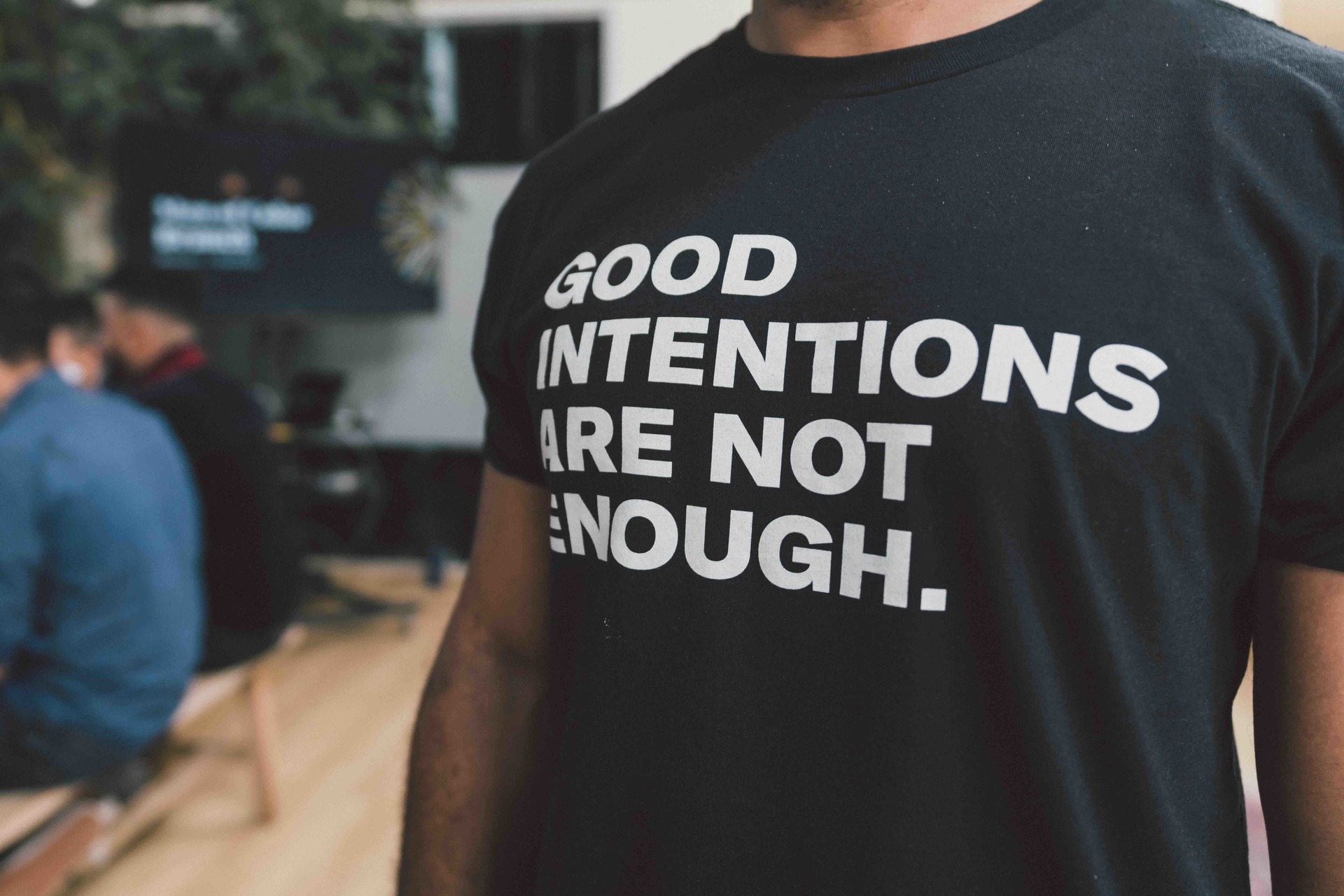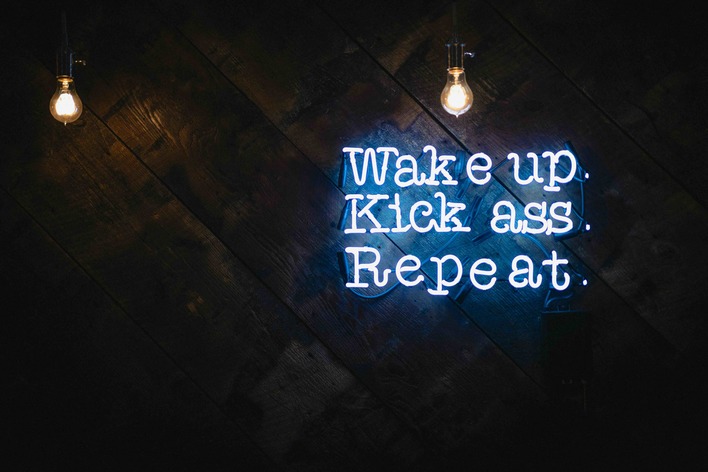Why You’re Struggling to Build Habits (And What to Do Instead)
5:45 am: I wake up, head downstairs, and reach for a hydrogen tablet with half a litre of water. I empty last night’s dishwasher, sterilise baby bottles, and add 15 drops of methylene blue into another half litre of water.
Then I brave a 3½‑minute cold plunge. While I’m in there, I soak two mugs in hot water. Once out, I spend 8 minutes under red light therapy. After that, I make coffee for me and my wife and take it back upstairs. By 6:25 am, we’re sipping in bed—and by 7:00 am, the kids burst in and our day begins.
When I tell people about my morning routine, the response is almost always something like:
“You do that every day? I wish I could get into the habit of waking up early… or doing ice baths…”
Or:
“You drink a litre of water first thing? I keep meaning to drink more water, but I always forget…”
Sound familiar?
When people set out to get fitter, eat better, or feel more in control of their day, they often say things like:
- “I just need to get into the habit of exercising…”
- “I want to build the habit of eating more protein…”
- “If I could just remember to drink more water…”
But here’s the catch: trying to build a habit for something that requires effort, intention, or discomfort often sets you up for disappointment.
The truth is, I haven’t developed a habit of waking up early or doing cold plunges. What I’ve built is a routine - and that’s a big difference.
Habits vs. Routines
We often use the words interchangeably, but there's a crucial distinction.
A habit is a behaviour done with little or no conciuos thought.
A routine is a series of behaviours that are intentional and repeated with effort.
This is backed up by experts like Nir Eyal, author of Indistractable, who warns that many people fail to make lasting change because they try to form habits before building routines.
Routines are what come first - the deliberate, structured behaviours we repeat. Over time, and only sometimes, they might evolve into habits. But not always, and that’s okay.
Trying to shortcut this process leads to frustration. We blame ourselves, thinking we lack discipline, when in fact, all we were doing is following flawed advice.
Why Routines Require Effort
Getting out of bed before sunrise, jumping into a cold plunge, cooking a protein-rich breakfast - these all take conscious thought. Even if they get easier with time, they rarely become truly effortless.
Routines, unlike habits, are often uncomfortable. They all involve a level of discomfort. They go against the grain of what your body wants in the moment – we like being comfortable. They require conscious thought, deliberate effort, and a degree of internal friction.
Compare that to brushing your teeth or making your morning coffee - things that feel strange not to do. Those are habits. But anything that offers delayed gratification - exercise, healthy eating, mindfulness - likely won’t ever feel that automatic.
That’s why chasing the idea of building a habit before building a routine is often setting yourself up to fail.
So How Do You Build a Routine That Sticks?
According to behavioural research and neuroscience, including insights from Harvard Business School, there are three key strategies:
- Set Rules, Not Just Intentions
We’re often told to “set clear intentions.” But the problem with intentions is they’re vague, flexible, and easy to ignore. They leave too much room for negotiation — both from others and yourself.
Instead, set rules.
Rules carry more weight. They feel firmer, more established - and we tend to obey them. While some might argue that rules sound restrictive, the truth is: people respect rules. They don’t respect vague intentions.
For example, don’t just say:
“I want to drink more water.”
Say:
“I drink 500ml of water as soon as I wake up.”
Likewise, don’t intend to go to the gym three times a week - make it a rule!
“I go to the gym three times a week. No matter what.”
Rules create clarity. They eliminate grey areas. They’re easier to follow, harder to argue with, and far more likely to be respected - by yourself and by others.
For example, I’ve walked at least 10,000 steps a day for over 380 days — through birthdays, Christmas, holidays, and even the birth of my son. Why? Because I made it a rule for myself: walk 10,000 steps every day. No excuses.
Be specific about what you’re doing, when you’re doing it, and why.
Reflect on your deeper reason. As Ximena Vengoechea suggests, ask yourself: “Why does this matter to me?” Knowing your why will help you push through inevitable resistance.
Charles Duhigg, author of The Power of Habit, also reminds us: “"There’s no such thing as 21 days to a habit." Some behaviours might take weeks, others months, some never. Be patient.
- Prepare for Roadblocks
Think ahead: What typically stops you? Lack of time? Distractions? Mental fatigue?
If you’ve failed before, learn from it. Anticipate obstacles and put systems or rules in place. Block out time in your calendar to make it a priority, and reduce decision-making, get accountability from a friend, partner or coach – Accountability is one of the biggest reasons our members keep showing up — and seeing results.
The more friction you remove in advance, the easier it becomes to follow through when energy or motivation is low.
- Use Nudges and Microhabits
A nudge is a small environmental cue or behaviour that supports the action you want to take.
For example:
• Place a full water bottle beside your bed as a reminder to hydrate first thing.
• Lay out your gym clothes the night before.
• Set a daily reminder to book your training session.
You can also try temptation bundling - linking something you want to do with something you should do. Listen to a podcast only while walking. Have a coffee only after a cold plunge.
These small adjustments make routines feel more sustainable, and even enjoyable.
Final Thoughts
If you’re trying to adopt healthier behaviours, don’t wait for them to become automatic. Don’t wait for motivation. And don’t beat yourself up when it doesn’t feel effortless.
Instead, design a routine - one that’s built around clear intentions, realistic expectations, and small supportive nudges.
Because real change comes not from what we do on autopilot, but from the conscious actions we show up for, day in, day out.
That’s where the transformation lives.



